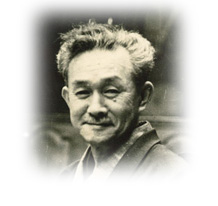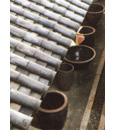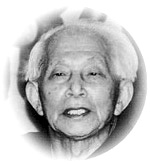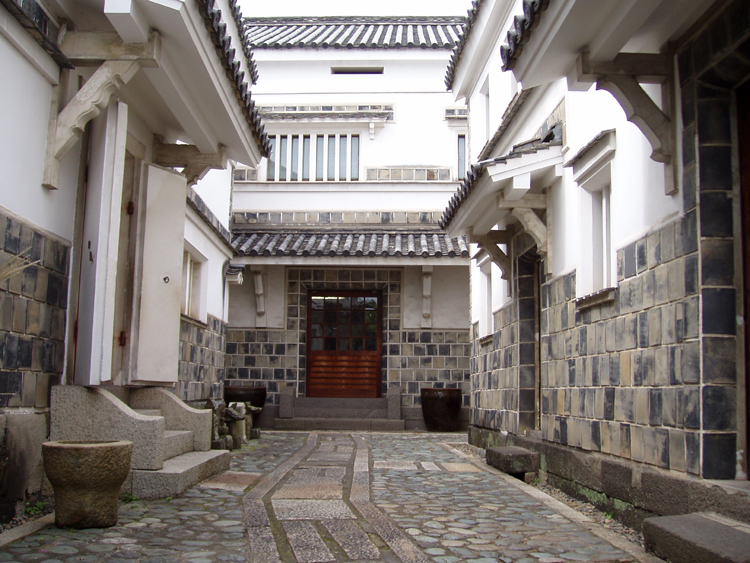Many
of the buildings you have seen before entering the museum were originally rice granaries built in the late 18th century. The tiled roofs, white-washed walls, black-tiled walls with lattice windows were the characteristics of Kurashiki townscape. Some of those buildings were reformed into a museum in 1948, and it was the first example
of such an attempt at renovation. Soon afterwards, people in Kurashiki decided to have a preservation area in order to keep these old traditional buildings.
 KURASHIKI MINGEIKAN is the second folk crafts museum in Japan. The first is NIHON MINGEIKAN, the Japan Folk Crafts Museum in Tokyo, which was founded in 1936 by Muneyoshi YANAGI. He was a philosophical thinker on art, and it was he that coined the word ¨mingei (i.e. folk-crafts)¨.
KURASHIKI MINGEIKAN is the second folk crafts museum in Japan. The first is NIHON MINGEIKAN, the Japan Folk Crafts Museum in Tokyo, which was founded in 1936 by Muneyoshi YANAGI. He was a philosophical thinker on art, and it was he that coined the word ¨mingei (i.e. folk-crafts)¨.
In the past history of arts, people had been inclined to think that only genius artists created beauty, and, as result, they had always regarded fine arts as the main source of beauty, and scarcely found beauty in utilitarian objects or in the daily life of ordinary people. However, Yanagi and his friends discovered beauty in the items or articles produced by unknown artisans and craftsmen. They traveled all over Japan and started collecting ¨mingei¨items from 1920s.

 In Kurashiki, Kichinosuke TONOMURA, the first President of this museum, collected more than 10,000 items. His collection includes the whole range of practical goods for everyday use, such as ceramics, textiles, lacquers, baskets, wood works, metal works, pictures and so on.
In Kurashiki, Kichinosuke TONOMURA, the first President of this museum, collected more than 10,000 items. His collection includes the whole range of practical goods for everyday use, such as ceramics, textiles, lacquers, baskets, wood works, metal works, pictures and so on.
|



 KURASHIKI MINGEIKAN is the second folk crafts museum in Japan. The first is NIHON MINGEIKAN, the Japan Folk Crafts Museum in Tokyo, which was founded in 1936 by Muneyoshi YANAGI. He was a philosophical thinker on art, and it was he that coined the word ¨mingei (i.e. folk-crafts)¨.
KURASHIKI MINGEIKAN is the second folk crafts museum in Japan. The first is NIHON MINGEIKAN, the Japan Folk Crafts Museum in Tokyo, which was founded in 1936 by Muneyoshi YANAGI. He was a philosophical thinker on art, and it was he that coined the word ¨mingei (i.e. folk-crafts)¨.
 In Kurashiki, Kichinosuke TONOMURA, the first President of this museum, collected more than 10,000 items. His collection includes the whole range of practical goods for everyday use, such as ceramics, textiles, lacquers, baskets, wood works, metal works, pictures and so on.
In Kurashiki, Kichinosuke TONOMURA, the first President of this museum, collected more than 10,000 items. His collection includes the whole range of practical goods for everyday use, such as ceramics, textiles, lacquers, baskets, wood works, metal works, pictures and so on.

















